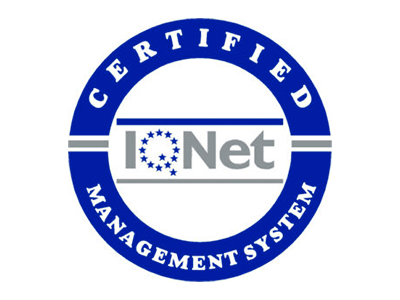The Most Common Computer Vision Applications
August 10th, 2022

Discover the most common computer vision applications that are used in a diverse range of fields and industries
The bounty of computer vision applications is growing more and more as AI-powered solutions are being welcomed into different types of businesses and daily activities. Computer vision is one of the cornerstones of AI and is considered a high priority not only by top tech giants but also by government agencies and smaller businesses. Having been around since the early 20th century, this branch of artificial intelligence was developed in order to simulate the human ability to build models for perception, reasoning, and learning from data.
What is computer vision?
As humans, we use our eyes to understand the world around us. The goal of computer vision is to enable computers to achieve the same capacity. It tries to ensure that machines can perceive and comprehend one or more images and act in a certain way.
The Internet has now become the great data depository of image and video files. However, just the sheer volume of diverse content coupled with the importance of immediate access to them poses several challenges for their processing and analysis. Therefore, efficient media analytics are needed to enrich content repositories so that users can be provided with valuable information about them.
This is where computer vision comes in. The AI-powered solution uses algorithms to analyze visual input, such as images and videos, and perform a variety of tasks. The many different artificial vision applications have been used to detect faces in photos and videos, recognize objects through image analysis, count people or cars in crowds, analyze traffic flow, track movement, find patterns in data sets, and much more. These applications can be used in a whole range of industries and fields including, robotics, surveillance systems, driverless cars, medical imaging, and more.
How does computer vision work?
Think about how you view the world. You’re able to see the objects and people around you, learn from experience, and remember what you’ve seen. Your brain is constantly working to understand everything it sees. This process is automatic for humans because we don’t think about it, and it happens instantly. The intention of computer vision is to reach this capacity.
Computers use software programs to interpret images or video frames by analyzing their content using mathematical algorithms. The process involves two steps.
1. Feature extraction
This is where an algorithm analyzes pixels within an image in order to identify specific characteristics of objects or faces within an image. This could include everything from simple color values (like red, green, and blue) to more complex things such as shape or texture. Feature extraction is also sometimes referred to as feature detection or blob detection (blob being another term for an object).
2. Classification
The second step is classification: once we’ve extracted these features from our image(s), we then need to determine what they are. The software compares the extracted features against known patterns (e.g., faces or cars). If there is enough similarity between the current image/frame under analysis and one of the known patterns, then it will return matches and segment images into regions or groups with similar properties
Computer Vision Applications
Computer vision is one of the most impactful and powerful types of AI. In fact, you might not realize just how present it is in everyday life. You might think that it’s not something you need, but if you take a step back and look around chances are that you could find at least a few examples of computer vision around you.
1. Self-driving cars
These cars collect data from their surroundings, interpret what is found from sensors and cameras, and act accordingly.
2. Pedestrian detection
This vital application impacts pedestrian protection and smart cities. Cameras will identify and locate pedestrians in images, and detect different variables such as clothing, positions, illuminance and background clutter.
3. Parking occupancy detection
Artificial vision is used to provide accurate results regarding occupancy and is even unsusceptible to changes in light and weather.
4. Traffic flow analysis
Algorithms are able to track, count, and monitor traffic, check road conditions, and improve road safety.
5. Cancer detection
Computer vision can identify anomalies and changes in cancerous and non-cancerous cells in images.
6. X-Ray analysis
X-Ray imaging can be applied to treatment, research, and surgeries to increase efficiency and accuracy.
7. Digital pathology
Scanners are able to process medical image data to detect pathologies. It is used for image interpretation, the inspection of tissue samples, and diagnosis accuracy.
8. Agriculture
Many companies use computer vision to monitor harvests and manage common issues such as weed growth and nutrient deficiency. They’ll use these solutions to anticipate problems and avoid financial losses.
9. Barcode detection
Computer vision is used to read barcodes on packaging to detect and translate them into readable text.
10. Defect inspection
Cameras are able to collect real-time data and analyze it to improve the accuracy of defect detection.
11. PPE Detection
Deep learning has successfully ensured safety protocols and standards are followed, reducing accidents and costs. Different variables are detected and assessed in order to respond quickly and take appropriate measures.
12. Retail
Computer vision is becoming more popular to use at checkouts and tackling pain points in shops such as long queues. It’s also used to detect stock replenishment and customer foot traffic.
Ready to see what we can do for you?
In the right hands, artificial intelligence can take human performance to a hitherto unimaginable level. Are you ready for evolution?




